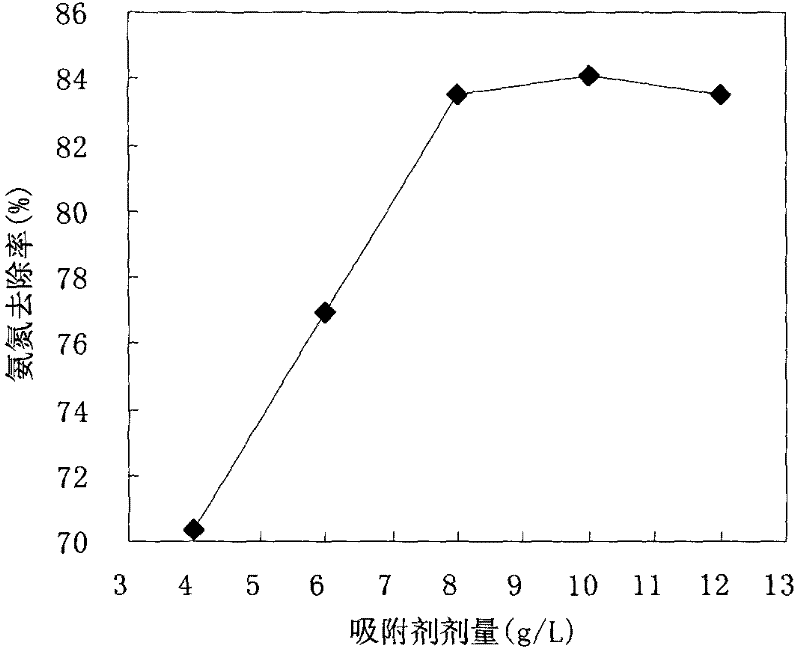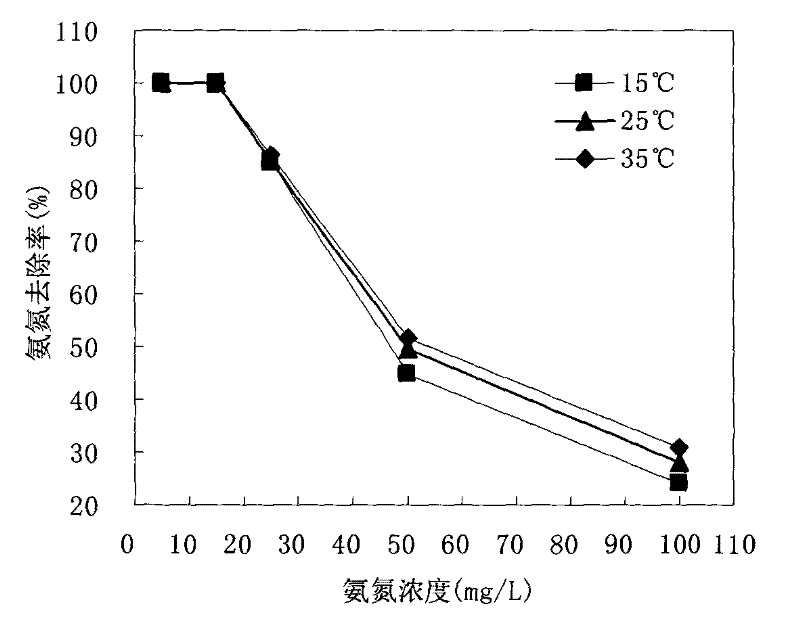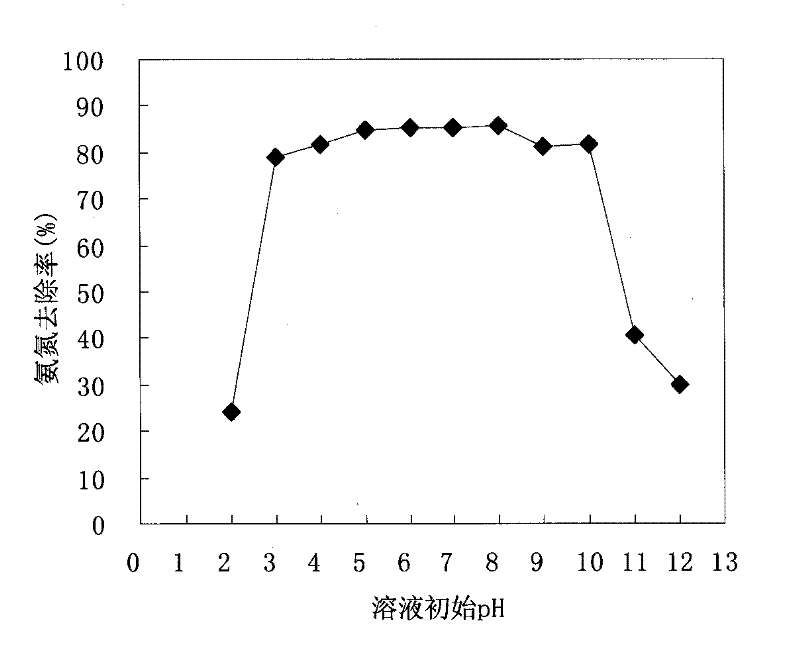Method for preparing ammonia-nitrogen adsorbent by using leaves of Magnolia magnolia and application of adsorbent
A technology of adsorbent and Magnolia japonica is applied in the field of water pollution treatment and achieves the effects of low cost, simple process and simple and easy pretreatment.
- Summary
- Abstract
- Description
- Claims
- Application Information
AI Technical Summary
Problems solved by technology
Method used
Image
Examples
Embodiment 1
[0015] The leaves of Magnolia magnolia were collected in Nanjing, washed three times with tap water and dried in the shade indoors. Magnolia magnolia leaves were first fixed at 105°C for 15 minutes, and then baked at 70°C for 10 hours to dry. The dried magnolia leaves are mechanically pulverized, and then sieved into 30-100 meshes with a standard sieve. Add the prepared adsorbent at a dose of 4g / L to an aqueous solution containing 25mg / L of ammonia nitrogen, shake at room temperature at 250r / min, and shake for 20 hours. The results show that the removal rate of ammonia nitrogen in this state is 70.4%. Under the same conditions, the removal rates were 77.0%, 83.5%, 84.1% and 83.5% by changing the dosage of adsorbent to 6, 8, 10 and 12 g / L respectively.
[0016] It can be seen that within the dosage of 4-12g / L, the larger the dosage of Magnolia magnolia leaves, the greater the removal rate of ammonia nitrogen in the water body, but if the dosage is too large, the removal rate ...
Embodiment 2
[0018] The leaves of Magnolia magnolia were collected in Nanjing, washed three times with tap water and dried in the shade indoors. Magnolia magnolia leaves were first fixed at 105°C for 15 minutes, and then baked at 70°C for 10 hours to dry. The dried magnolia leaves are mechanically pulverized, and then sieved into 30-100 meshes with a standard sieve. Add the prepared adsorbent at a dosage of 8g / L to an aqueous solution containing 5mg / L of ammonia nitrogen, shake at 250r / min at 15°C, and shake for 20 hours. The results show that the removal rate of ammonia nitrogen in this state is 100%. Under the same conditions, the initial ammonia nitrogen concentration in the solution was changed to 15, 25, 50 and 100 mg / L respectively, and the resulting removal rates were 100%, 85.2%, 44.9% and 23.9%, respectively. Under the same conditions as in the above examples, changing the oscillation temperature to 25°C and 35°C respectively, the ammonia nitrogen removal rates under the five in...
Embodiment 3
[0021] The leaves of Magnolia magnolia were collected in Nanjing, washed three times with tap water and dried in the shade indoors. Magnolia magnolia leaves were first fixed at 105°C for 15 minutes, and then baked at 70°C for 10 hours to dry. The dried magnolia leaves are mechanically pulverized, and then sieved into 30-100 meshes with a standard sieve. Add the prepared adsorbent at a dose of 8g / L to 25mg / L aqueous solution containing ammonia nitrogen, adjust the initial pH of the solution to 2 with 0.1mol / L HCl, shake at room temperature at 250r / min, and shake for 20 Hour. The results show that the removal rate of ammonia nitrogen in this state is 100%. The results show that the removal rate of ammonia nitrogen in this state is 24.3%. Under the same conditions, the initial pH of the solution was adjusted to 3, 4, 5, 6, 7, 8, 9, 10, 11 and 12 with 0.1mol / L HCl or NaOH, and the resulting removal rates were 79.1%, 81.9%, 84.6%, 85.1%, 85.2%, 85.7%, 81.3%, 81.6%, 40.7%, and 2...
PUM
 Login to View More
Login to View More Abstract
Description
Claims
Application Information
 Login to View More
Login to View More - R&D
- Intellectual Property
- Life Sciences
- Materials
- Tech Scout
- Unparalleled Data Quality
- Higher Quality Content
- 60% Fewer Hallucinations
Browse by: Latest US Patents, China's latest patents, Technical Efficacy Thesaurus, Application Domain, Technology Topic, Popular Technical Reports.
© 2025 PatSnap. All rights reserved.Legal|Privacy policy|Modern Slavery Act Transparency Statement|Sitemap|About US| Contact US: help@patsnap.com



